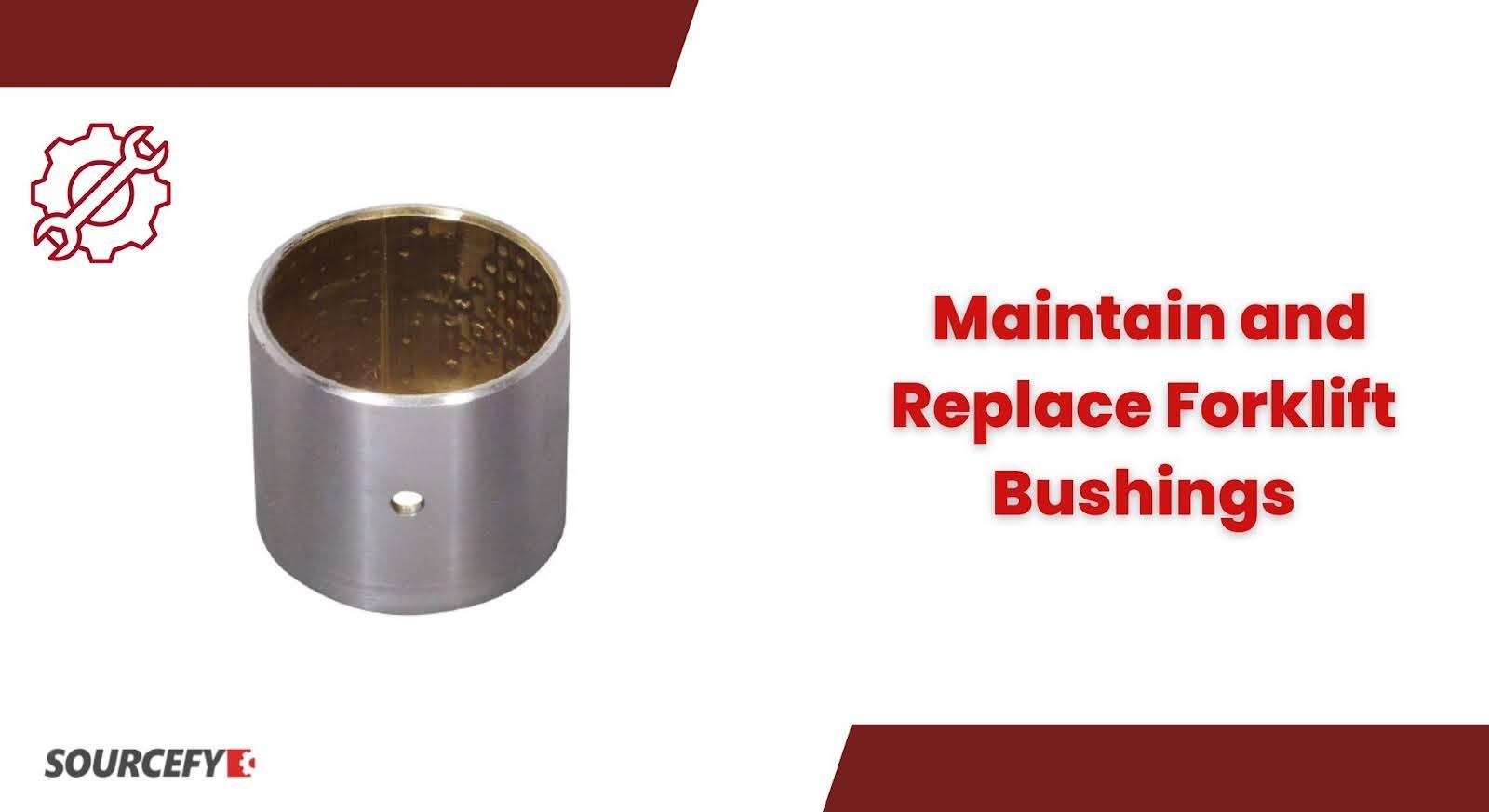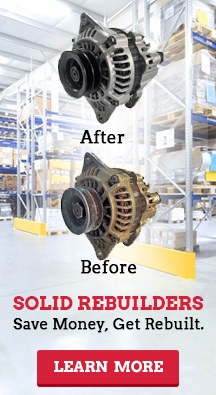- Home
- Forklift Parts
- Bushings
- Mast Bushings
Categories
Mast Bushings
Forklift mast bushings are essential components within the forklift mast mechanism. They reduce friction between the mast's moving parts and ensure the smooth vertical movement of the mast and carriage, which is crucial for safely lifting and lowering loads.
By minimizing friction, bushings prevent wear and tear on key components, prolonging the life of the mast system. Regular maintenance and timely bushings replacement are important to avoid costly repairs and downtime and ensure that the forklift operates efficiently and safely during heavy lifting tasks.
What are Forklift Mast Bushings?

These bushings are essential components within the forklift mast assembly. They act as a buffer between moving parts, reducing friction and allowing for smooth movement of the mast and carriage as loads are lifted and lowered. By absorbing shock and minimizing wear on the mast rails, bushings for forklifts play a vital role in maintaining the structural integrity of the mast over time.
These forklift bushings come in various types, each designed for specific functions. Carriage bushings support the smooth vertical movement of the carriage, while side thrust bushings prevent lateral movement. Load roller bushings help distribute the load and ensure even wear across the mast's components.
Types of Forklift Mast Bushings

Different types of bushings are designed to serve specific functions within the mast assembly. Each type ensures smooth movement, reduces friction and prevents wear on the mast components.
-
Carriage Bushings
Carriage bushings support the smooth vertical movement of the carriage along the mast rails. These bushings act as cushions between the moving carriage and the mast structure, reducing friction and preventing wear on the metal components.
By ensuring smooth travel up and down the mast, carriage bushings help improve load handling efficiency and protect the mast from damage caused by excessive friction or misalignment during operations.
-
Side Thrust Bushings
Side thrust bushings are designed to prevent lateral movement of the mast or carriage during lifting operations. They absorb sideways forces that occur when the load shifts or the mast tilts.
By controlling this side-to-side motion, these bushings help maintain the alignment of the mast and ensure that the carriage remains stable. Side thrust bushings reduce unnecessary wear on the mast's side rails and contribute to the forklift's overall stability during heavy load handling.
-
Load Roller Bushings
Load roller bushings are positioned around the load rollers, which carry the weight of the mast's moving components. These bushings help distribute the load evenly across the rollers, reducing stress and preventing uneven wear.
Properly functioning load roller bushings ensure smooth operation when lifting or lowering loads, enhancing the forklift's efficiency and reducing wear on both the mast and the load rollers.
-
Tilt Cylinder Bushings
Tilt cylinder bushings are essential for the smooth operation of the mast's tilt function. They are located in the tilt cylinders, allowing the mast to tilt forward and backward to better position loads.
These bushings reduce friction in the tilt mechanism, ensuring smooth motion and preventing damage to the mast or cylinders. Regular maintenance of tilt cylinder bushings is necessary to avoid mast tilting issues and keep load handling efficient and safe.
-
Guide Bushings
Guide bushings are used to direct and support the movement of chains, cables, or other components within the mast assembly. They help ensure that these components move along their designated path with minimal friction, reducing the likelihood of misalignment or mechanical failure.
Guide bushings keep chains and cables properly aligned, contributing to the smooth operation of the forklift mast and helping extend the lifespan of these critical components.
Signs of Worn Forklift Mast Bushings

Worn or damaged bushings can cause several noticeable performance issues.
- Jerky Movement of the Mast: If the mast doesn't move smoothly during lifting or lowering, it may be due to worn-out bushings causing friction or misalignment.
- Increased Noise or Vibration During Lifting Operations: Unusual noises, such as grinding or excessive vibrations, are often signs of worn-down bushings that can no longer effectively absorb shock.
- Visible Wear or Damage on the Bushings: A visual inspection may reveal cracks, wear marks, or other signs of damage to the mast bushings.
Note: Ignoring these signs can lead to bigger mechanical problems, such as increased wear on other mast components, decreased performance, and costly downtime due to necessary repairs.
How to Maintain and Replace Forklift Bushings?

Regular inspection of forklift bushings is essential for identifying wear early and preventing damage to other components of the mast assembly. Checking the condition of your forklift’s bushings during routine maintenance can help avoid mechanical failures and extend the forklift's life.
Tips for Maintaining Forklift Bushings:
Proper maintenance of bushings is essential to extend their lifespan and ensure smooth operation of the forklift mast.
- Clean Regularly: Dirt and debris can build up around the bushings for forklifts, increasing friction. Regularly cleaning the mast and bushings helps reduce wear and ensures smooth operation.
- Lubricate Properly: Proper lubrication is key to reducing friction between moving parts. Use manufacturer-recommended lubricants to keep the bushings functioning smoothly.
- Inspect for Wear: During routine checks, observe signs of wear, cracks, or other damage. Addressing early signs of wear helps prevent major issues down the line.
Steps for Replacing Forklift Mast Bushings:
Replacing worn bushings requires careful steps to ensure proper installation and restore smooth mast function.
- Park the Forklift: Ensure the forklift is safely parked on a flat surface and powered down.
- Disassemble the Mast Components: Remove the mast components necessary to access the bushings. This may include detaching the mast or carriage.
- Remove Old Bushings: Use appropriate tools to remove the worn or damaged bushings.
- Install New Bushings: Carefully install the new mast bushings for the forklift, ensuring they are positioned correctly.
- Reassemble the Mast: Once the new bushings are in place, reassemble the mast components and perform a test to ensure smooth operation.
Conclusion
Proper maintenance and timely replacement of mast bushings are essential for keeping forklifts running smoothly and safely. Bushings for forklifts are critical in reducing friction, absorbing shock, and ensuring smooth movement of the mast during lifting operations.
Ignoring worn bushings can lead to jerky movements, increased wear on other components, and costly downtime. Regular inspections, cleaning, lubrication, and prompt replacement help extend the lifespan of the forklift and prevent more significant mechanical issues. Keeping the mast in top condition ensures operational efficiency and workplace safety.
Frequently Asked Questions
What are mast bushings for forklifts?
These forklift components reduce friction and allow smooth movement between the mast's moving parts. They help the forklift operate efficiently by absorbing shock and minimizing wear on the mast assembly.
How do I know if my forklift bushings are worn?
Worn bushings can cause jerky mast movements, increased noise or vibration during lifting, and visible wear or cracks on the bushings. Regular inspection is crucial to catch these signs early.
How often should mast bushings for forklifts be replaced?
The frequency of replacement depends on forklift usage and the working environment. Regular maintenance checks help identify worn mast bushings early, ensuring timely replacement before they cause further damage.
Why are bushings for forklifts important?
Forklift bushings play a critical role in ensuring smooth mast operation, reducing friction, and absorbing the shocks and stresses of daily forklift use. This helps prevent wear on the mast and other components, extending the forklift's lifespan.
 Loading... Please wait...
Loading... Please wait...



